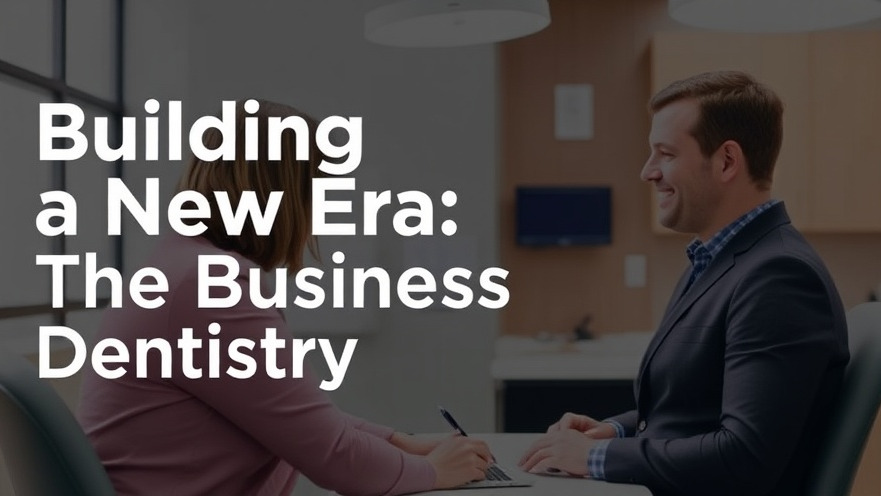
Understanding the Impact of Ownership Changes on Dental Practices
Ownership in any business can feel like a seismic shift, particularly in dental practices where team dynamics and patient relationships are paramount. When a dentist exits and a new owner steps in, anxiety often dominates among staff and patients alike. Dr. Samson Liu emphasizes that this turmoil can be mitigated through strategic leadership and communication. By recognizing and validating the concerns of team members, you cultivate an environment where fears give way to opportunities for growth and adaptability.
Creating Stability Amidst Change
A key aspect of a smooth transition during ownership changes is maintaining a sense of stability. Dr. Liu suggests minimal adjustments at the onset, indicating that retaining the same practice name, signage, and contact information maintains familiarity, thus reducing disorientation for patients. Such thoughtful actions allow the new owner to analyze existing practices, gain a comprehensive understanding of what has worked, and organically instill their style of leadership without alienating the established team.
The Importance of Open Communication
Effective leadership during changes necessitates establishing transparency and open lines of communication. It is vital not only to listen to concerns, but also to share updates regarding transitions in a clear and accessible manner. Rumors thrive in silence; addressing uncertainties head-on can dissipate potential negativity, fostering trust. Regular meetings to discuss developments and hear feedback can encourage engagement and unity within the team.
Building Relationships for Future Success
Ownership transition is not merely about the technicalities of the practice; it is fundamentally about people. Developing relationships with staff members opens a pathway to understanding their fears and aspirations, forging a collaborative environment. As trust builds, team members are more likely to support emerging changes and adapt to new philosophies under the new leadership. Relationships built on respect and understanding result in higher morale and a more cohesive workforce.
Engaging in Continuous Learning
Another approach to aiding transitions is incorporating a mindset of continuous learning. New owners should prioritize understanding the nuances of the existing practice model while collecting insights from team members about what works and why. This fact-finding mission can reveal strong, successful practices that should be preserved. When change is enacted based on informed decisions, rather than assumptions, the team is likely to accept innovations with less resistance.
Managing Change: Strategies and Best Practices
Successful implementation of changes requires strategic planning. Owners should focus on offering support rather than imposing mandates. Gradual changes supported by rationale can enhance team buy-in. Engaging in coaching, mentorship, and team-building activities can empower staff and bolster morale, ensuring their continued engagement and productivity in a transforming landscape.
Future Outlook: Preparing for Ongoing Changes
In an ever-evolving healthcare environment, being adaptable is crucial. As new techniques, technologies, and policies emerge, dental practices must be equipped to evolve continuously. Owners should instill an agile mindset within their teams, encouraging them to embrace innovations as growth opportunities rather than threats. Fostering a culture of resilience not only eases transitions but creates a thriving practice poised for future success.
Conclusion: Turning Change into Opportunity
The transition of ownership in a dental practice, while challenging, can culminate in enhanced collaboration and growth when navigated adeptly. As leaders, being attuned to the emotional landscape, maintaining open communication, and committing to thoughtful change, can uplift both team morale and patient trust. Embracing these principles facilitates a thriving environment where change is interpreted not as a disruption, but as a stepping stone toward enriching the practice.
 Add Row
Add Row  Add
Add 




Write A Comment